Recently I was browsing Childhood 101’s blog and stumbled across this post about using Uno to play an attribute game. It reminded me of several summers of serious card playing where my sisters and I played a lot of “Black Jack” which is similar to Uno but uses a regular pack of playing cards. Naturally I decided that fun could be had if the concept was applied to pebbles. After all, they don’t blow away in the wind and there are usually more advantages using natural materials when working with maths. Let me show you why…
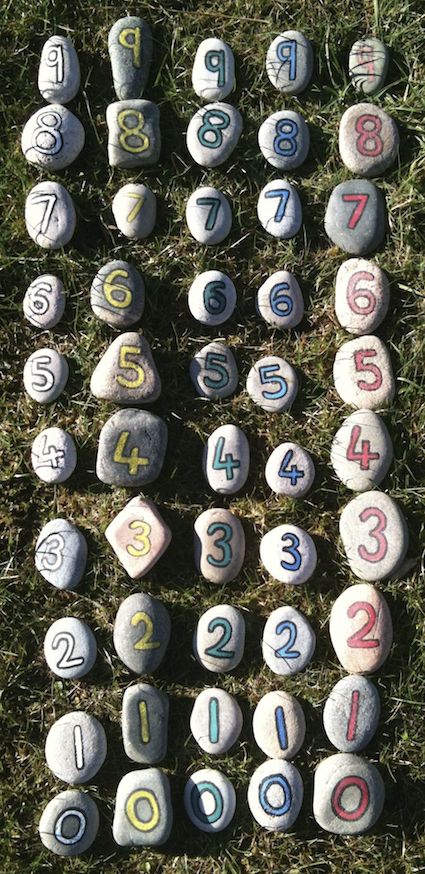
I have a large bag of 50 pebbles which is perfect for this sort of game, and many others. There are 10 sets of 0-9 pebbles in different colours.
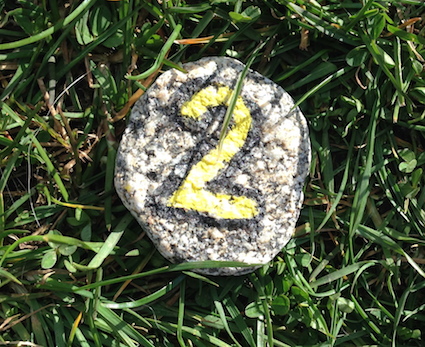
You begin the game as normal. Share out a selection of number pebbles. Someone goes first and puts down a pebble.
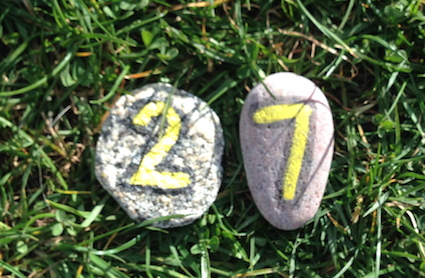
The next person may only change one attribute. In the photo above this is the number, itself. The colour remains constant. Likewise, in the photo below, the number value has been changed. If you wish, the child can add the value of the two numbers together.
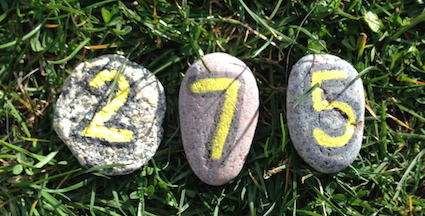
Now the fun begins. You can’t stack pebbles. You have to place the down beside each other. This means children can see the progression of the game and how the decisions are being made. In the photo below, the number has stayed constant, but the colour has changed. Also, for the fun of it, I changed the direction – after all, who says it must be a straight line?

The game continues very much in the same vein. With little children this is probably sufficiently challenging.
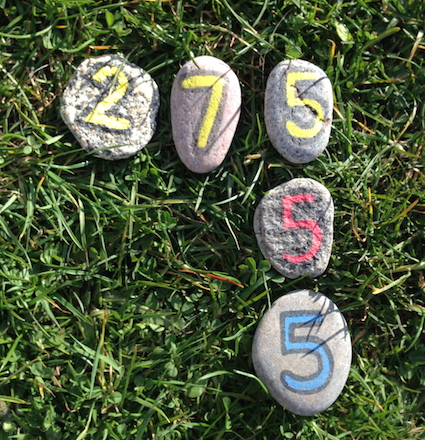
You can have fun trying to ensure that everyone can still put down a pebble. You can “chap” if you cannot go and miss your turn. Or you could pick up a spare pebble.
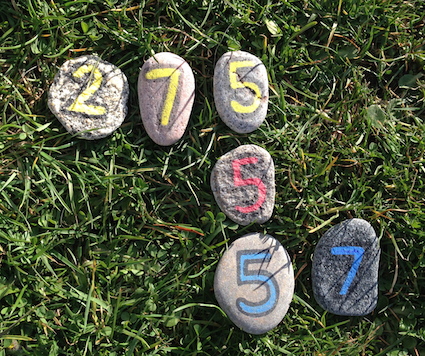
With children who are ready for more, the fun can really begin. You can add in wild pebbles which create a different rule. In the photo below, I decided that a “sad face” meant that the next person would miss their go (NB for the purposes of this blog post, I was playing by myself and even this was surprisingly absorbing).
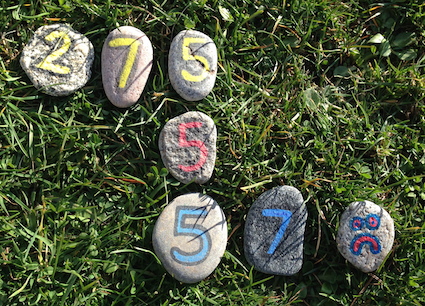
When you create a game, you can decide the rules. One of my rules was that you can build from the other end of the line. So I added a colour wheel. This meant that I could choose to change the colour of the next pebble played.
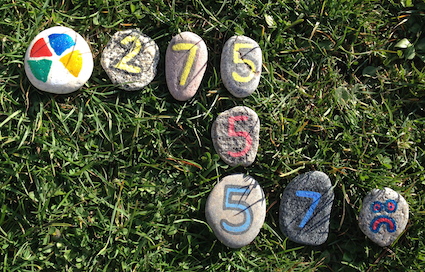
So I changed it to red and added the number 4. In other words I could change two attributes. Aha! Power!
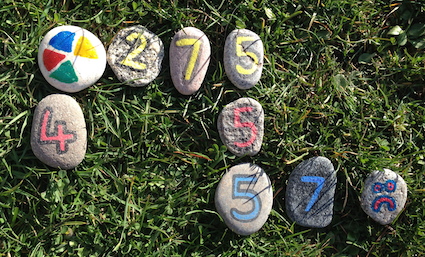
However, I decided to continue with the flow of the original game.
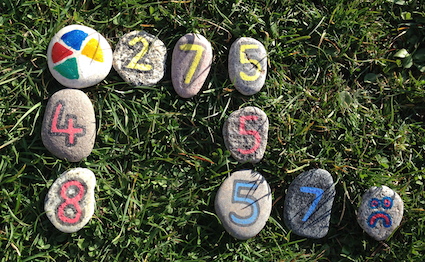
I decided that the green arrow stone represented an ending. At this point, I was not allowed to add anymore pebbles to this line.

So I picked another place to continue the game.
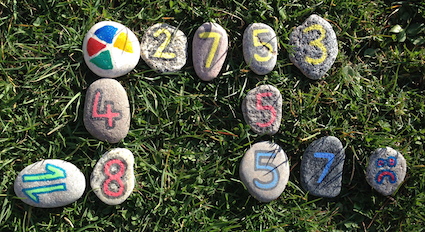
Of courses, I was also free to continue to build the line after the “sad face” pebble.
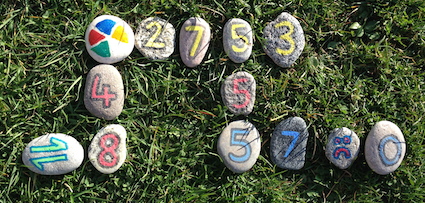
And I also decided it would be fun to develop other lines coming out of the colour wheel.

The ability to create one’s own rule-changing pebbles is infinite. You could begin with similar ideas to Uno and Black Jack but then move on to deciding the consequences of different pebbles. Children could move this game in untold, infinite directions further developing their understanding of patterns, logic and attributes. Yet another game for the summer ahead…




















We made and played this today , amazing !
Oh I am so pleased to hear that it went well.
Hiya,
This went really well with another class, now we’ve branched out into outdoor Scrabble made of kindling labelled with letters and letter values. Brilliant fun!
Oh my goodness – I see the ideas are growing arms and legs. That’s lovely to know!